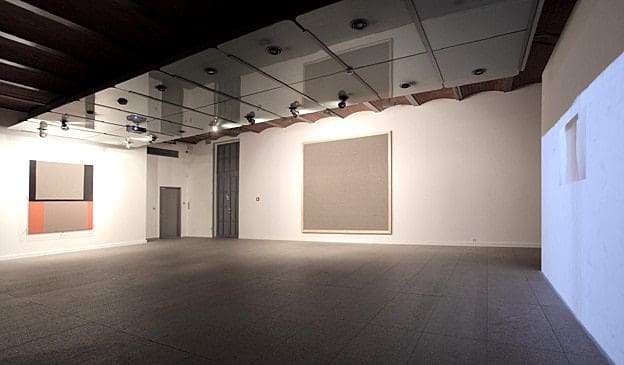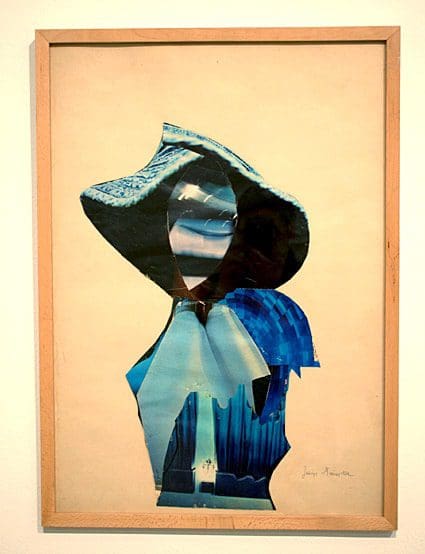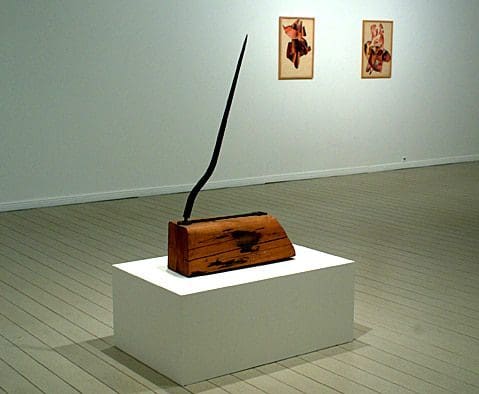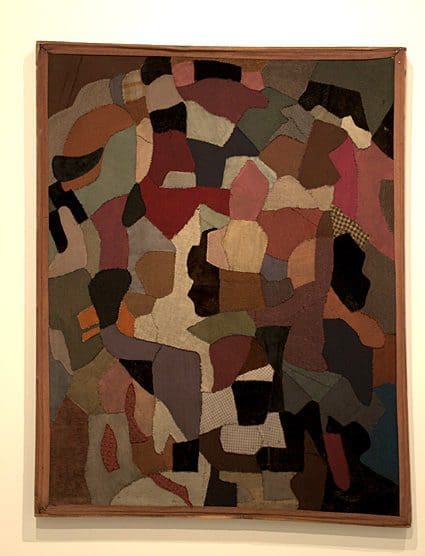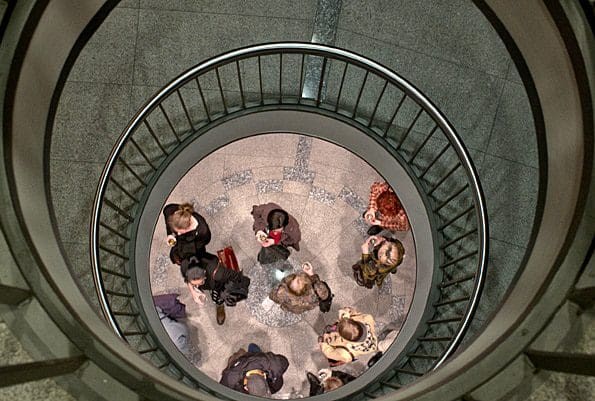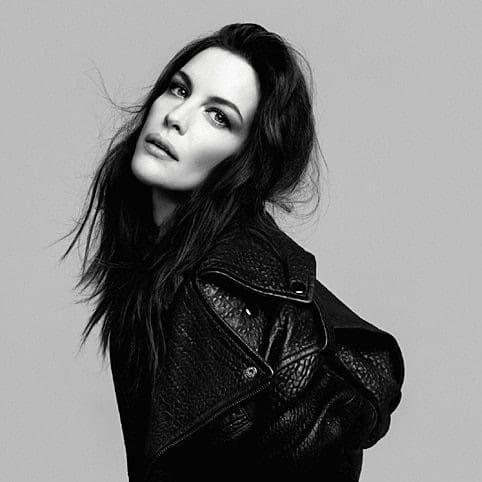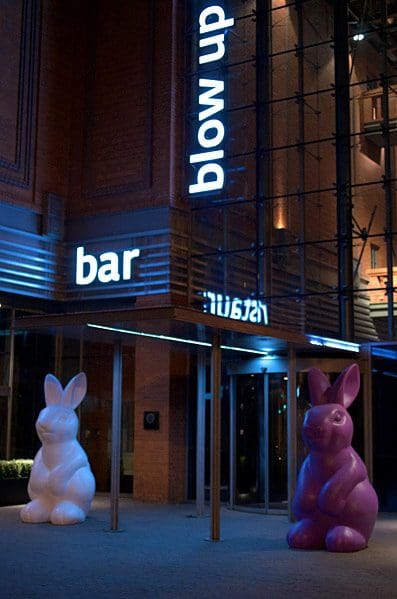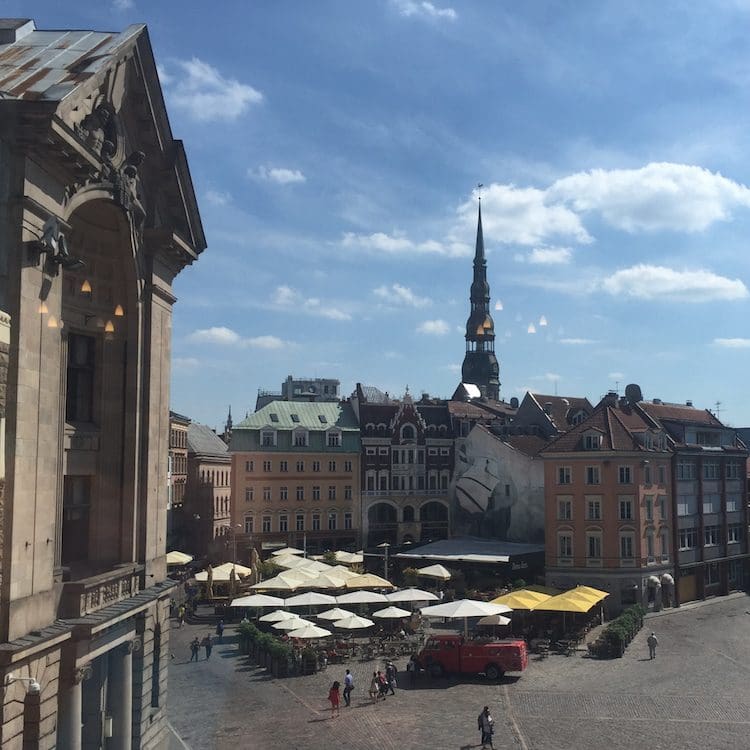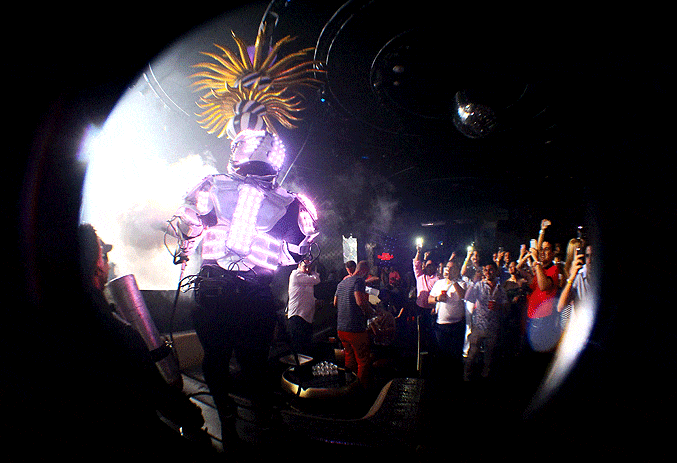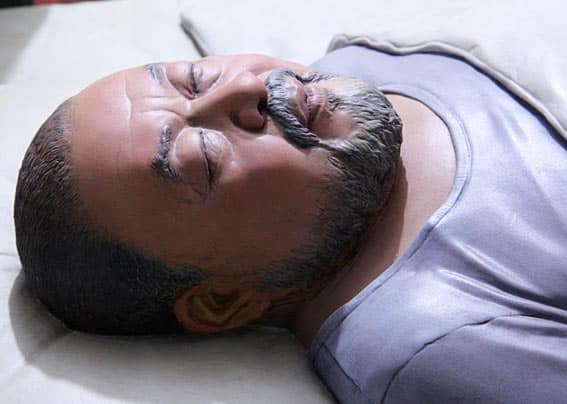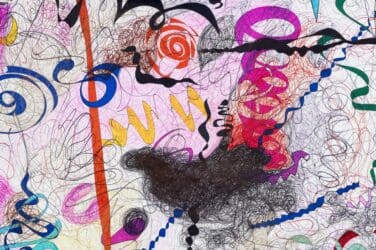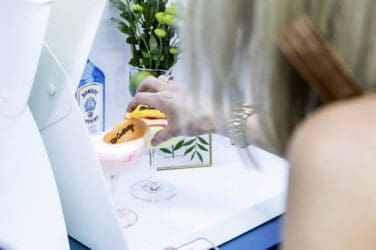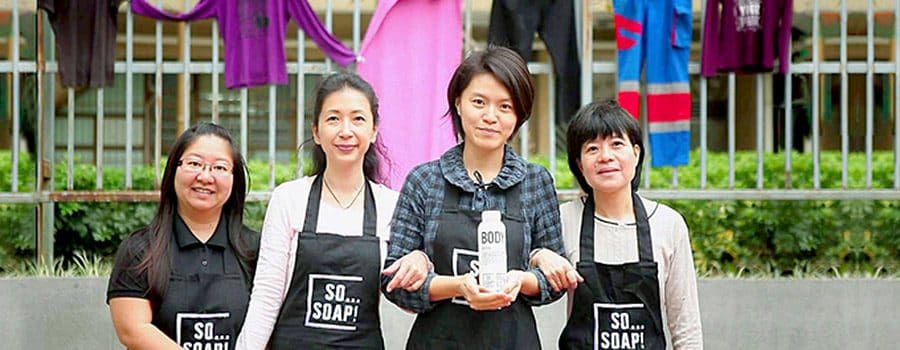Exhibition Review by Richard Unwin
Taking in the full height of the cutting-edge Art Stations Foundation in Poznan, ‘Parellel Systems’ showcases three 20th Century female artists, Gertrude Goldschmidt (a.k.a Gego), Jadwiga Maziarska and Rosemarie Trockel, with the work of each displayed on separate floors of the foundation’s dedicated gallery building.
The most established of the three, and the only one still alive, German Rosemarie Trockel (b. 1952) has long been connected with original, feminist-inspired art, with her work included in the collections of the Tate and MOMA, New York. Placed in a neat dialogue on the ground floor, the three works shown here offer a brief introduction to Trockel’s oeuvre. The video Untitled (Wollfilm) 1992 draws the attention with its depiction of a woolen jumper slowly unravelling from a woman’s torso, its subject complimented by the two knitted ‘paintings’, Saw Dust (2010) and Untitled (1989), the first knitted by the artist by hand, the latter by machine.
A strong contrast to Trockel’s tactile aesthetic, the work of Gego (1912-1994) is given even more sparing treatment in a visually striking exhibit on the floor above. Born in Hamburg, the Jewish artist had an unconventional life, fleeing Germany in 1939 and emigrating to Venezuela where she took citizenship. Well respected in her new home, Gego’s practice focused on sculpture and print making that probed the concept of line and its mathematical context. As depicted here in a specially commissioned video, this focus reached its peak in her Reticuláreas series, where interconnected metal webs were created to fill entire rooms. Alongside a tiny Gego sculpture, Untitled (Study) (1964), also shown in the exhibition is an intriguing geometric print, Untitled (Almanacque for 1969) (1968) which shows the artist following a complex formula relating to days and months of the year.
Ending on the upper floor gallery with the work of Polish artist Jadwiga Maziarska (1913-2003), ‘Parellel Systems’ concludes with a more traditional, museum-style presentation, as a result providing a more rounded impression of Maziarska’s approach. A body of largely abstract works that allow time to contemplate different aspects of the image, included here is a large fabric patchwork, Spontaneous Cause [Automatic Reason] (1950), that communicates well with Trockel’s work below. The wax on canvas painting, Composition (1960), conversely adds a sense of organic macabre to the exhibition, while the centrally placed sculpture, Spatial Form (1985), with its horn-like, steel spike standing erect from a wooden block, asserts a final brutal flourish.
If a unifying theme can be found between these three, varied artists, then Spatial Form perhaps provides the best guide, evoking, as it does, a clash between mechanical and domestic worlds, and the prescribed roles of men and women within them.
Showing for free at Art Stations Foundation, Poznan, Poland until 26 August 2012
http://artstationsfoundation5050.com/en
Exhibition Review by Richard Unwin


